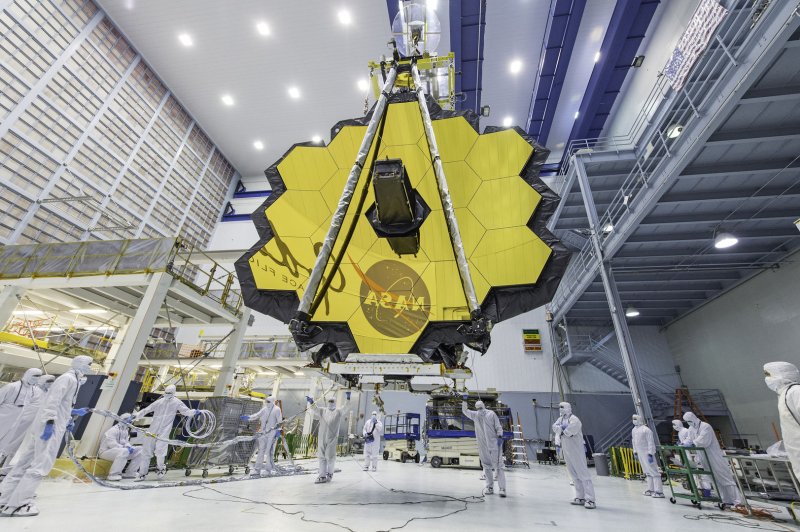NASA has announced another delay in the target launch date for the James Webb Space Telescope. NASA Photo by Desiree Stover/UPI |
License Photo
Sept. 29 (UPI) -- NASA's new target window for the launch of the James Webb Space Telescope is between March and June 2019. The world's most powerful space telescope was previously scheduled to launch in October 2018.
"The change in launch timing is not indicative of hardware or technical performance concerns," Thomas Zurbuchen, associate administrator for NASA's Science Mission Directorate at the agency's D.C. headquarters, announced in a news release this week. "Rather, the integration of the various spacecraft elements is taking longer than expected."
An international agreement with the European Space Agency required NASA to analyze the telescope's launch preparedness one year prior to the launch date. The assessment forced officials to reconsider their plans, and ultimately inspired NASA to push back the launch date once more.
JWST, the successor to the Hubble Space Telescope, was first conceived of in 1996. Along the way, the project has been replanned several times, each time pushing the target launch date backward -- from 2011 to 2013, from 2015 to 2018 and now to the spring of 2019.
Scientists say the latest delay is largely the result of the complexity of the space telescope's sunshield.
"The combination of some integration activities taking longer than initially planned, such as the installation of more than 100 sunshield membrane release devices, factoring in lessons learned from earlier testing, like longer time spans for vibration testing, has meant the integration and testing process is just taking longer," said Eric Smith, program director for the James Webb Space Telescope at NASA's headquarters.
Unlike Hubble, which can be serviced by astronauts and have instruments swapped in and out, JWST must be in its final form before launch.
The construction of such a massive and complex telescope has been a lengthy process. NASA had to build new facilities in which to build and test the groundbreaking telescope -- a painstaking and expensive process that may never be repeated.
"This may be the last [space] telescope that we build that is not modular," NASA administrator Charles Bolden told reporters last year.
Once it begins its scientific mission, though, astronomers are sure to rejoice as they begin to field giant troves of rich astronomical data.
The telescope's 18 hexagonal mirrors will field massive amounts of infrared light, allowing scientists to peer deeper into space with greater clarity and to study the universe's first generation of stars and galaxies. JWST will also help scientists study the habitability of nearby exoplanets.















